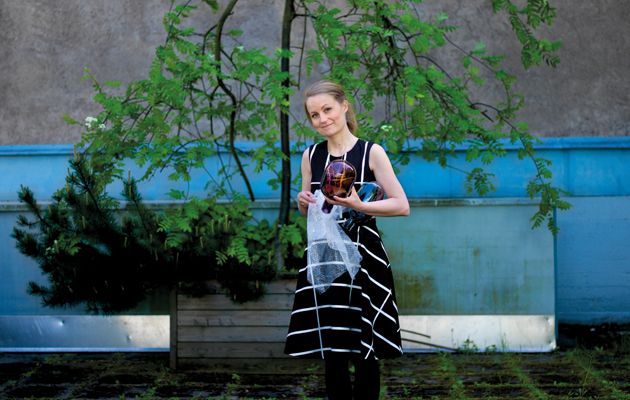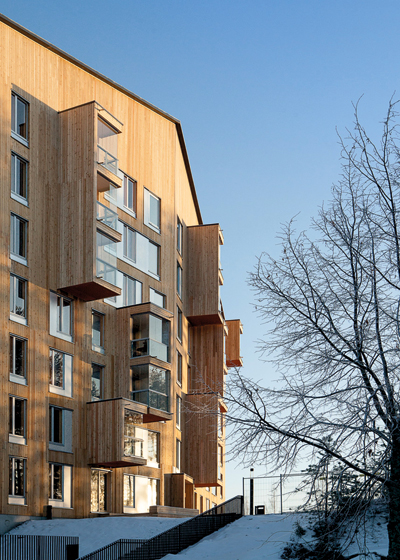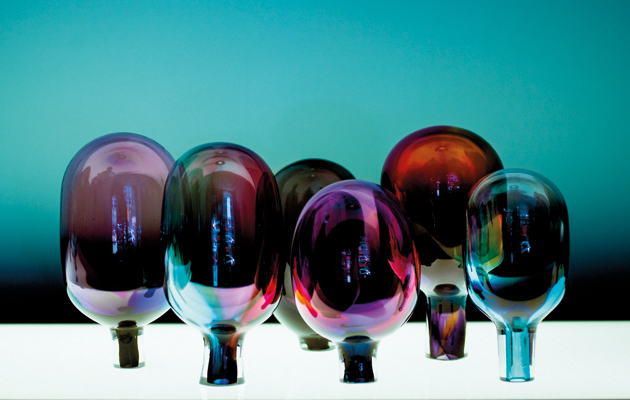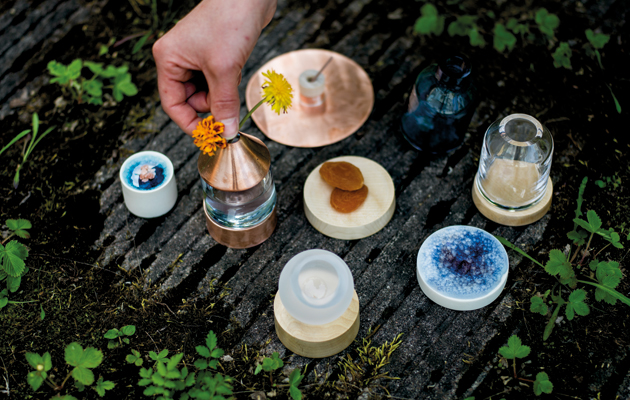|
|
||
|
The Finnish architect, ceramicist and glasswork designer explains how working with buildings informs her creative process on a smaller scale Hanna-Kaarina Heikkilä originally trained as an architect and has spent the past three years working with Finnish practice OOPEAA Office for Peripheral Architecture, which represented Finland at the 2014 Venice Architecture Biennale. Recently, she retrained as a product designer on the ceramics and glass course at Aalto University, and has already earned widespread praise for her luminous hand-blown glass pieces, which were presented earlier this year in Milan. Icon met up with Heikkilä in Helsinki to talk about designing at different scales. ICON: It’s fascinating that you originally trained and still work as an architect, but are now also moving towards product design. Hanna-Kaarina Heikkilä: Yes, my background is originally in architecture. I studied in Tampere at the University of Technology. In Finland, there are actually only three places where you can study architecture, and Tampere is one of them. And, like many Finnish architects, I haven’t yet completed my master’s thesis. I’ve been working for about six years and I really need to complete it! My plan is to get it done later this year. ICON: What will you be writing about? HKH: Either Japanese tea-house culture or modular facades. I’d really like to apply my knowledge of ceramics to make a more modern facade using ceramic or brick modular systems. ICON: How does one get from architecture to ceramics? HKH: I lived in Japan for two years, working as an architect. Just for something to do, I took a few ceramics classes. It was so fascinating to work so directly with the material. When I came back to Finland I worked for another two years, but eventually I decided to apply for a course so I could do something with materials. OOPEAA is a very material-oriented practice, but I also wanted to work with materials on a small scale, to experiment and try to figure things out. ICON: What kind of work do you do at OOPEAA? HKH: I work as a designer. Basically, I do architecture across many different kinds of projects. Sometimes I do urban planning; I’ve been involved in housing projects, churches, schools – a wide variety, really.
The Puukuokka apartment complex in the Jyväskylä suburb of Kuokkala, FInland, designed by OOPEAA ICON: Your interest in materiality at small scales – with glass and ceramics – and then in the larger scales of architecture must inform each other in an interesting way … HKH: Absolutely. For me, any project is always grounded in conceptual thinking, so it’s the same principles in the design process even when working at different scales. In the end, it’s just problem solving, regardless of scale. Of course, different materials are used at different scales and there are various kinds of details to consider for different materials, but there are similarities in terms of the creative processes. I also think that when you understand a certain material really well at a small scale, you know what you have to do to gain that same knowledge of any other material. ICON: Your Keshini range suggests you have a very good understanding of glass. Can you talk a bit about the process of making those? HKH: The idea was to study the materiality of glass. The whole process was very experimental. I made them myself, with the help of one other person, because you need two people to blow glass. I had been making watercolour paintings of landscapes and I wanted to simplify the landscapes, to abstract them, and translate them into glass. But it took a lot of testing and many different kinds of experiments with the colour to eventually get the glass to resemble the watercolours. |
Words Crystal Bennes
Images: Aki-Pekka Sinikoski; Mikko Auerniity |
|
|
||
|
Heikkilä’s Keshini glasswork range |
||
|
ICON: It’s interesting talking about experimentation because, compared to London or Eindhoven where design schools are often driven by conceptual, speculative or critical ideologies, the approach in Helsinki feels very pragmatic. HKH: It’s definitely true, I think. Many people here aren’t really thinking about the culture of design. They just make things. When I was living in Japan, I noticed a very different culture. For example, they do much more conceptual work than we do in Finland. They do a lot of, not exactly copy-pasting, but you see that if something is popular, everyone does the same kind of thing, just a bit differently. And the way they make architecture is so different. We have very strict building regulations in Finland and many times when I was working in Japan I just thought, “That would never be allowed in Finland.” |
||
|
Various glass, ceramic and metal pieces in her garden |
||
|
ICON: Do you plan to continue with architecture or will you now focus on product design? HKH: Many people have asked me that! When I applied to study again on the glass and ceramics programme at Aalto, everyone thought I was giving up on architecture. But that’s not the case. I like architecture, I like the projects and I like working in the office. I’ll definitely be contining to work with architecture projects. Ideally, I’d like to be able to combine the two. ICON: Any other exciting projects on the horizon? HKH: I’m working with New Works, a Danish company, to develop a table lamp drawing on the Keshini pieces, which is very exciting. I’m also involved in a couple of projects for Helsinki Design Week [in September]. One is with Artek, who are launching a new concept at Habitare. I’m designing a tea house for their stand, a coffee shop in the middle of the fair, which should be fun. We’re submitting the drawings this week, actually. It’s a bit crazy. I have so many things to do right now. Not least of which is to finish my architecture thesis. |
||























